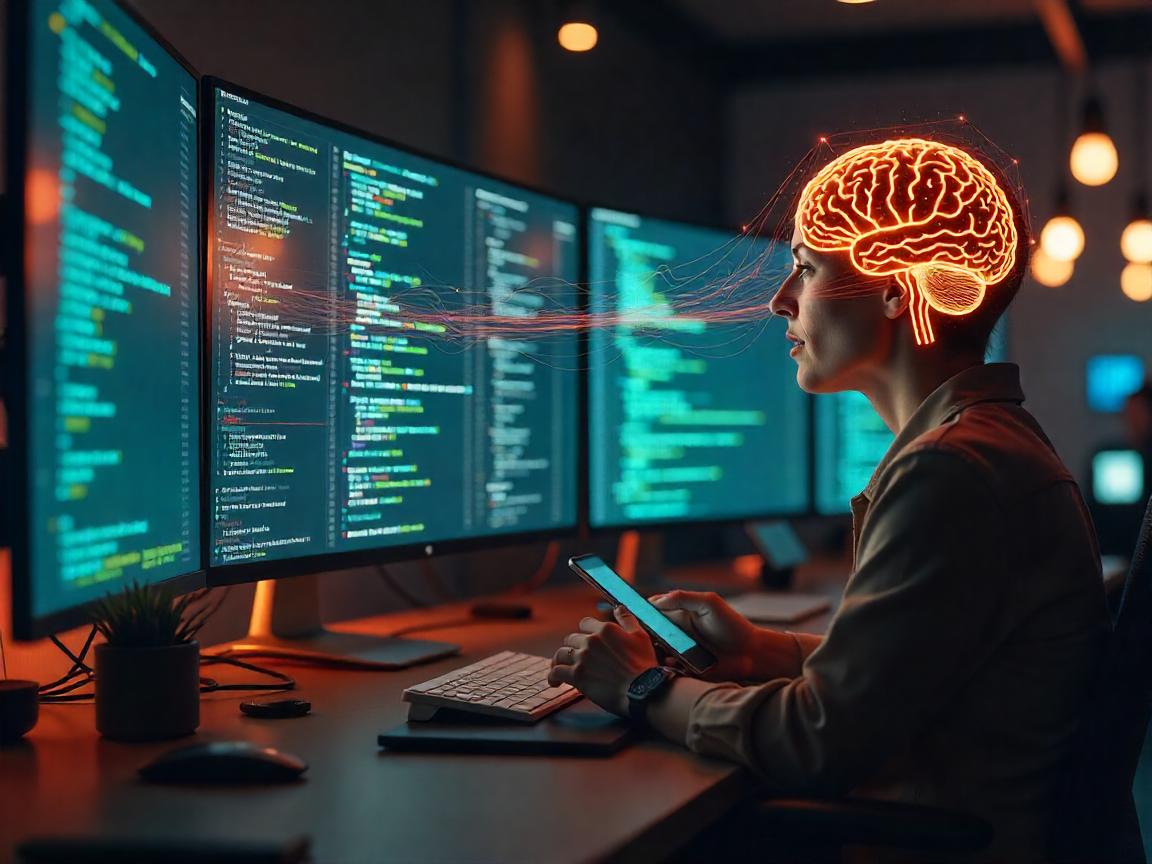
When AI Starts Fixing Its Own Mistakes
AI reasoning engines: Developers used to waste their whole weekend looking tiny error messages and tracing through their codes in search of a erranton bracket or a poorly-chosen variable name. That is a ritual that is slowly fading off today. Self-correcting reason engines are coming to recognize logic errors, perform dynamic tests and, in some cases, even correct flawed code even before a human being knows anything about a bug report. It is almost like a science fiction- self debugging machines.
However, with businesses such as GitHub, DeepMind, and OpenAI working on an improvement of these autonomous agents, it is becoming apparent that it is no longer a gimmick of the future. Indeed, a March 2025 study on GitHub proved that self-correcting models reduce critical code failures by 45 percent in JavaScript applications used in production, which left many CTOs surprised. At least personally, I recall the moment when an AI first proposed a solution to a bug in my API handler and it, in turn, turned out to work perfectly and it was an exciting and at the same time strange experience.
What Makes Self-Correcting AI Different
Fundamentally, a self- correcting reasoning engine combines two critical abilities, recursive code creation, and dynamic test development. Such systems, unlike older purely static analysis tools which merely report the errors and leave the rest of the work to software developers, actually propose and check solutions automatically. You can imagine that they act like a junior developer who never sleeps and is never disheartened by a failed build. As an illustration, the Iterative Refinement pattern used in OpenAIs Codex passes through a set of hypotheses, comparing them to existing patterns and real-time testing outcomes. It is somewhat an analogy of a chess player replaying the same opening until he or she stumbles upon the winning line. Real-life deployments based on SaaS platforms report that autonomous debugging reduced their average time-to-resolution by over 50 percent, in a survey published in The Verge in April 2025.
Real-World Impact and Use Cases
What we cannot cover over here is that machine learning is already saving organizations millions in terms of self-correcting AI. Among the most impressive ones is that of Credify, a fintech company that deals with compliance scripts of cross-border transactions. Leveraging autonomous debugging on their Node.js environment, they reduced the number of downtimes caused by bugs by 67 percent and could save an approximated $2 million of operational expenses during one fiscal year. One more example is a medium-size e-commerce store that deployed argumentation engines to identify nuanced error in their taxes computation process which tax QA could not find before. The applications can be cross industry, with banks automating compliance changes to indie software development teams speeding up product release without a massive increase in staff size.
The Promise and the Pitfalls
One is naturally tempted to think of this technology as a silver bullet, but it is worth remembering that the situation is not that black-and-white. Dr. Self-correcting engines are genius at pattern recognition, and iterative improvement Rohan Patel, Chief AI Architect, DeepCode Labs, said to MIT Technology Review last month. Yet they will also introduce sudden regressions in case you give them your blind faith.” I have gone through this myself. In one project an autonomous agent rewrote a piece of data formatting code so badly that it disrupted old integrations entirely, to the surprise of the integration and legacy systems developers. A cold-reminder: automation is not magic. You will still need to exercise human judgment, especially when AI makes a fix that creates minor inconsistencies you might only discover weeks later.
Where We Go From Here
Whether self-healing software will be common or not is a question that is long overdue it is rather how we are going to streamline our culture and process. As the systems become more capable, teams will have to redefine what interpretations of accountability should be in the event of a machine suggesting a solution that subsequently leads to the destruction. Is it the fault of the model? The approving developer? Or the data training company? At least to me, the only way out is to be transparent: clear logs of each recommendation and a human in the loop of critical systems.
The development business is being transformed in a positive way through AI reasoning engines, but it is time to be frank enough to state facts: they are also reconsidering the border between being a human and a machine in terms of resolving the goals. Perhaps the best part is that we challenge our own presumptions about who—or what—qualifies as a developer by creating tools smart enough to put us to the test.